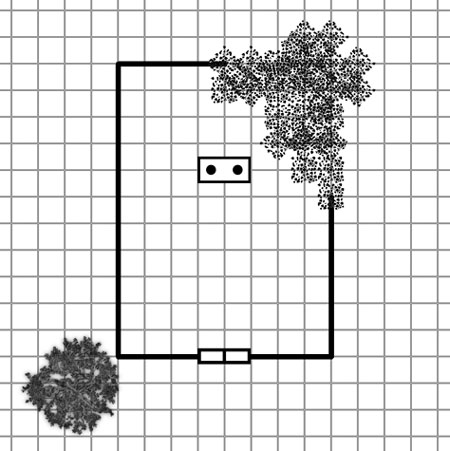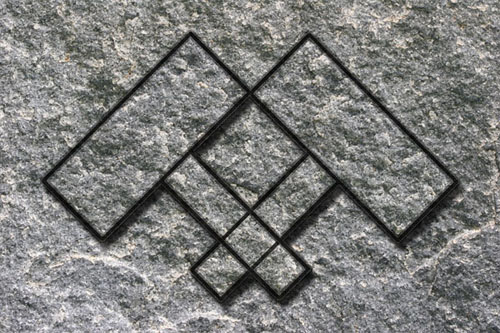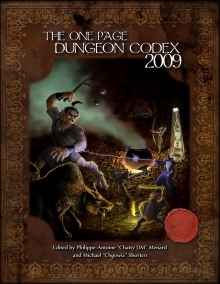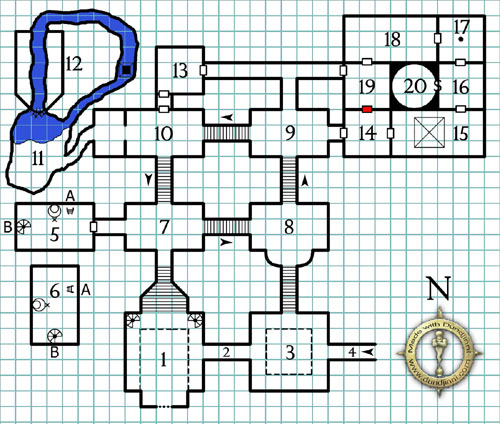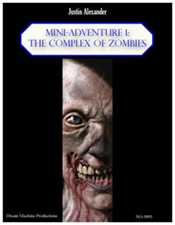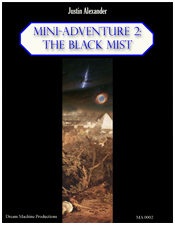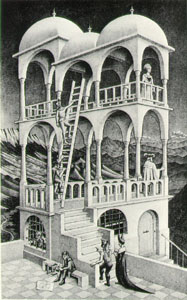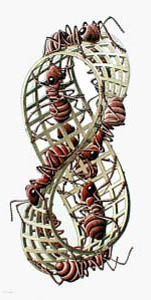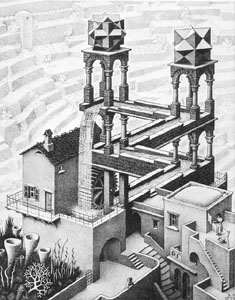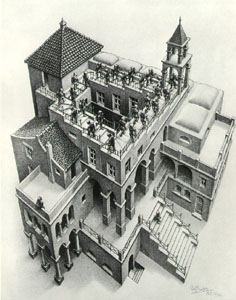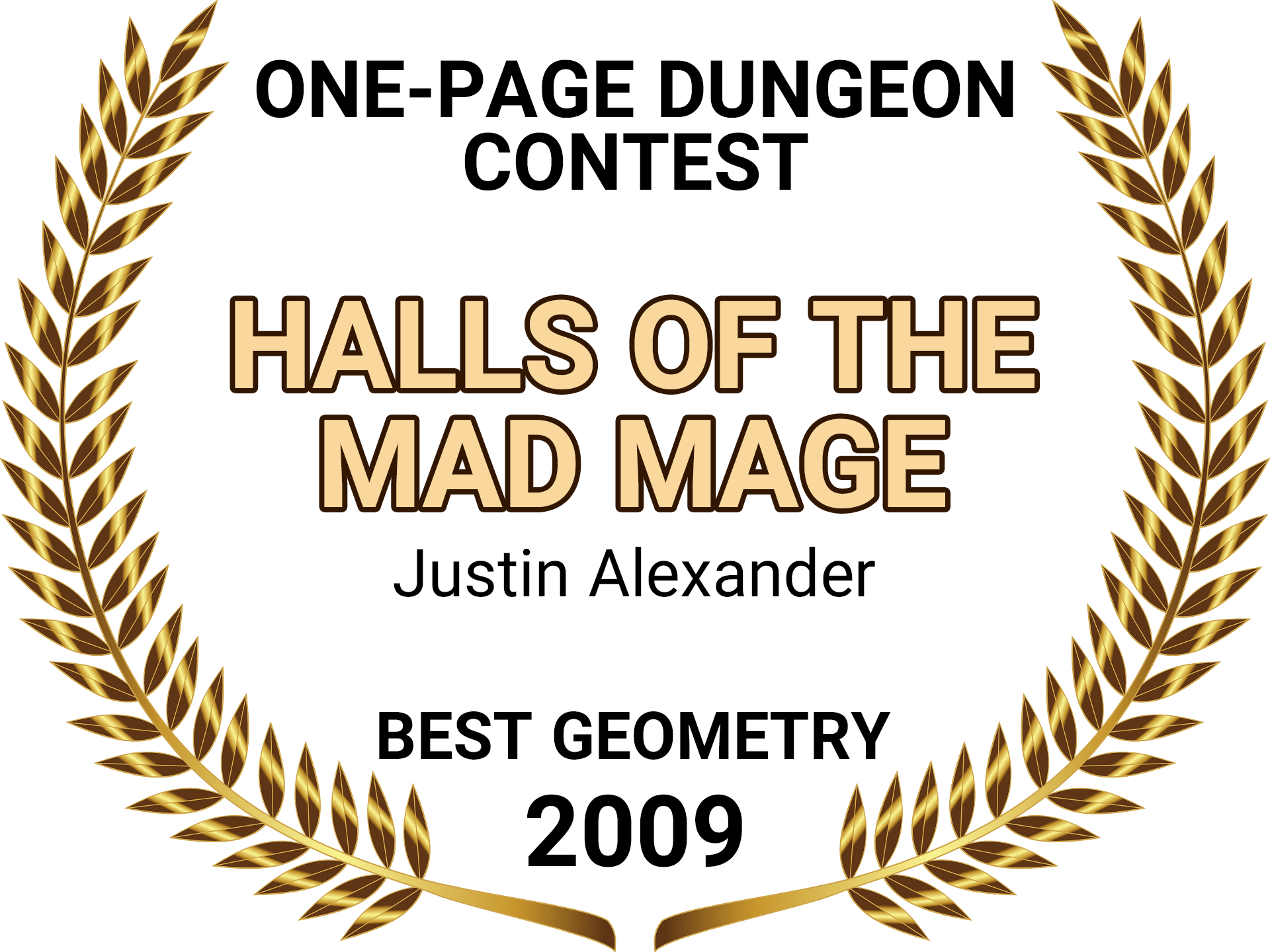Go to Part 1
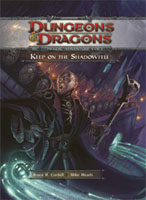 SPOILER WARNING!
SPOILER WARNING!
The following thoughts contain minor spoilers for Keep on the Shadowfell. If you don’t want to be spoiled, don’t read it. And if you’re in my gaming group then you definitely shouldn’t be reading it.
REVELATION 4: CULT OF ORCUS
Once the PCs become aware of the cult’s potential involvement in the area (either through identifying a holy symbol; an Orcus idol; or learning of the keep’s true history), they may want to find out more about Orcus and his cult.
CLUE 1: ARCANA/RELIGION CHECK. See the Monster Manual, pg. 206, for Orcus Lore.
CLUE 2: STREETWISE CHECK/VALTHRUN. See “On the Streets of Winterhaven”.
CLUE 3: DOUVEN STAHL. Douven Stahl can tell them everything on pgs. 206 and 210 of the Monster Manual regarding Orcus and his cults. See, also, “Dragon Burial Site”.
REVELATION 5: KALAREL’S RITUAL
The PCs don’t need to know about Kalarel’s ritual before stumbling into area 19 of the keep, but they’re likely to be interested in learning what the cult is planning.
CLUE 1: KALAREL’S RITUAL LETTER. The note Kalarel writes to Ninaran can be recovered after the “Dead Walk” interlude. It mentions the keep (see below).
CLUE 2: DOUVEN STAHL. Douven Stahl can make several informed guesses regarding the ritual (see “Dragon Burial Site”).
CLUE 3: SIR KEEGAN. Sir Keegan, in area 8 of the keep, can tell them of the Fane of Orcus which lay beneath the keep (see “Kalarel’s Ritual”). He knows that the cultists have gathered there.
KALAREL’S RITUAL LETTER
I received your report on the runebearers. Next time you see them, but an end to their meddling. Mix the blood of ten people with the elixir my messenger brings. Then trace the following pattern on the ground of the graveyard and pour the liquid into the lines:
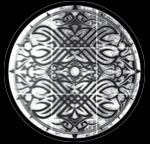
With the thinning of the veil here at the keep, this circle will create a sympathetic connection to the Shadowfell.
My work here is very near completion. It will not be long now. If you come to the keep, the pass phrase for the second level is “from the ground, some magic was found”.
Kalarel
USING THE REVELATION LIST
Basically, there are three steps to my use of the revelation list for an adventure:
First, I determine the chokepoints of the adventure and list the necessary revelations.
Second, for each revelation I make a list of at least three clues and then incorporate these clues into the design of the adventure.
Third, while actually running the adventure, I keep the revelation-and-clue list handy as a quick-reference tool. I treat it as a literal checklist: If the PCs find a clue, I check it off. If the PCs have missed a clue (by failing to search a room, for example), I’ll circle it. If the PCs have definitely reached a particular conclusion (not just considered it as a possibility, but definitively concluded that “this is what’s happening”), I’ll cross the entire revelation off my list.
Using this approach allows me to spot potential trouble spots as they’re developing: If, for example, the PCs have discovered all the clues I’ve designed for a particular revelation but, for whatever reason, still haven’t draw the proper conclusion then I know I need to introduce new clues. Similarly, if they’ve been missing a lot of clues for a particular revelation, I can start anticipating the need for new clues.
My original Three Clue Rule essay had a lengthier discussion of how to deal with these types of issues as they emerge, but here’s an example: If the PCs have missed or ignored all of the clues suggesting that they should really check out the Keep of the Shadowfell and see what’s going on there, I might decide to trigger Ninaran’s assault on Lord Padraig’s manor house with the intention that either Ninaran or one of the other cultists will willingly surrender when the encounter turns against them and spill their guts regarding Kalarel’s plans.
Similarly, if the PCs haven’t found the kobold lair yet, I might trigger one of the kobold encounters — either the “Slyblade Hunter” or “Farmer’s Jeopardy” encounters can be used without the PCs taking any action themselves — and use it as a way of introducing a new clue. (Or, if nothing else, give the players something to do while I try to figure out another way of getting them back on track.)
The good news is that, when you use the Three Clue Rule, you generally won’t run into these problems in the first place, so you’ll be able to spend more time playing the game and less time trying to fix the game.
| July 2nd, 2008 REMIXING KEEP ON THE SHADOWFELL
PART 14: THREE CLUE RULE – SECOND REVELATIONS
Go to Part 1
SPOILER WARNING!
The following thoughts contain minor spoilers for Keep on the Shadowfell. If you don’t want to be spoiled, don’t read it. And if you’re in my gaming group then you definitely shouldn’t be reading it.
REVELATION 4: CULT OF ORCUS
Once the PCs become aware of the cult’s potential involvement in the area (either through identifying a holy symbol; an Orcus idol; or learning of the keep’s true history), they may want to find out more about Orcus and his cult.
CLUE 1: ARCANA/RELIGION CHECK. See the Monster Manual, pg. 206, for Orcus Lore.
CLUE 2: STREETWISE CHECK/VALTHRUN. See “On the Streets of Winterhaven”.
CLUE 3: DOUVEN STAHL. Douven Stahl can tell them everything on pgs. 206 and 210 of the Monster Manual regarding Orcus and his cults. See, also, “Dragon Burial Site”.
REVELATION 5: KALAREL’S RITUAL
The PCs don’t need to know about Kalarel’s ritual before stumbling into area 19 of the keep, but they’re likely to be interested in learning what the cult is planning.
CLUE 1: KALAREL’S RITUAL LETTER. The note Kalarel writes to Ninaran can be recovered after the “Dead Walk” interlude. It mentions the keep (see below).
CLUE 2: DOUVEN STAHL. Douven Stahl can make several informed guesses regarding the ritual (see “Dragon Burial Site”).
CLUE 3: SIR KEEGAN. Sir Keegan, in area 8 of the keep, can tell them of the Fane of Orcus which lay beneath the keep (see “Kalarel’s Ritual”). He knows that the cultists have gathered there.
KALAREL’S RITUAL LETTER
|
I received your report on the runebearers. Next time you see them, but an end to their meddling. Mix the blood of ten people with the elixir my messenger brings. Then trace the following pattern on the ground of the graveyard and pour the liquid into the lines:

With the thinning of the veil here at the keep, this circle will create a sympathetic connection to the Shadowfell.
My work here is very near completion. It will not be long now. If you come to the keep, the pass phrase for the second level is “from the ground, some magic was found”.
– Kalarel
|
USING THE REVELATION LIST
Basically, there are three steps to my use of the revelation list for an adventure:
First, I determine the chokepoints of the adventure and list the necessary revelations.
Second, for each revelation I make a list of at least three clues and then incorporate these clues into the design of the adventure.
Third, while actually running the adventure, I keep the revelation-and-clue list handy as a quick-reference tool. I treat it as a literal checklist: If the PCs find a clue, I check it off. If the PCs have missed a clue (by failing to search a room, for example), I’ll circle it. If the PCs have definitely reached a particular conclusion (not just considered it as a possibility, but definitively concluded that “this is what’s happening”), I’ll cross the entire revelation off my list.
Using this approach allows me to spot potential trouble spots as they’re developing: If, for example, the PCs have discovered all the clues I’ve designed for a particular revelation but, for whatever reason, still haven’t draw the proper conclusion then I know I need to introduce new clues. Similarly, if they’ve been missing a lot of clues for a particular revelation, I can start anticipating the need for new clues.
My original Three Clue Rule essay had a lengthier discussion of how to deal with these types of issues as they emerge, but here’s an example: If the PCs have missed or ignored all of the clues suggesting that they should really check out the Keep of the Shadowfell and see what’s going on there, I might decide to trigger Ninaran’s assault on Lord Padraig’s manor house with the intention that either Ninaran or one of the other cultists will willingly surrender when the encounter turns against them and spill their guts regarding Kalarel’s plans.
Similarly, if the PCs haven’t found the kobold lair yet, I might trigger one of the kobold encounters — either the “Slyblade Hunter” or “Farmer’s Jeopardy” encounters can be used without the PCs taking any action themselves — and use it as a way of introducing a new clue. (Or, if nothing else, give the players something to do while I try to figure out another way of getting them back on track.)
The good news is that, when you use the Three Clue Rule, you generally won’t run into these problems in the first place, so you’ll be able to spend more time playing the game and less time trying to fix the game.
| Link |
